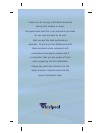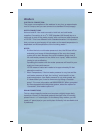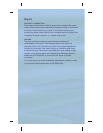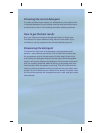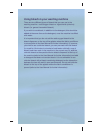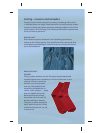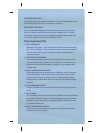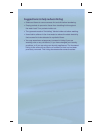
REDEPOSITED SOILS
Soil redeposition can also be mistaken for lint. Soil redeposition may
look like a grey-white “fuzz” or streak on clothing.
DETERGENT RESIDUE
Some powdered detergents react with the minerals in hard water
to form a whitish residue that can also be mistaken for lint. Some
powdered detergents may not completely dissolve (especially with
cool wash water), which can be mistaken for lint.
How to prevent lint
1. sort carEfully
Separate “lint givers”, such as chenille, towels, annel, sweaters,
etc., from “lint takers”. Very old and very new items may produce
more lint than other items. If loads cannot be sorted properly,
expect some lint.
2. usE EnougH DEtErgEnt
Use enough detergent to help hold loose lint in the water until it
can be ushed away. Follow the manufacturer’s instructions to
determine how much detergent is enough for your washer and
clothes load.
3. Don’t oVErloaD tHE WasHEr
Overloading causes excess abrasion of fabrics, which increases
linting and pilling. Clothes also need to be able to move in the
wash and rinse water so loose lint can be carried away. Make
sure to select a water level that is correct for the load size being
washed.
4. sHortEn WasHing timE
Shorten the wash time for smaller load sizes and for lightly soiled
loads.
5. usE a DryEr
The tumbling action of a clothes dryer shakes lint loose and allows
it to collect in the lint screen. Avoid overdrying to prevent excess
buildup of static electricity on synthetic fabrics. Static electricity
on fabrics attracts lint.
6. Don’t oVErloaD tHE DryEr
Clothes must tumble freely so loose lint can shake free and be
collected in the lint screen.




